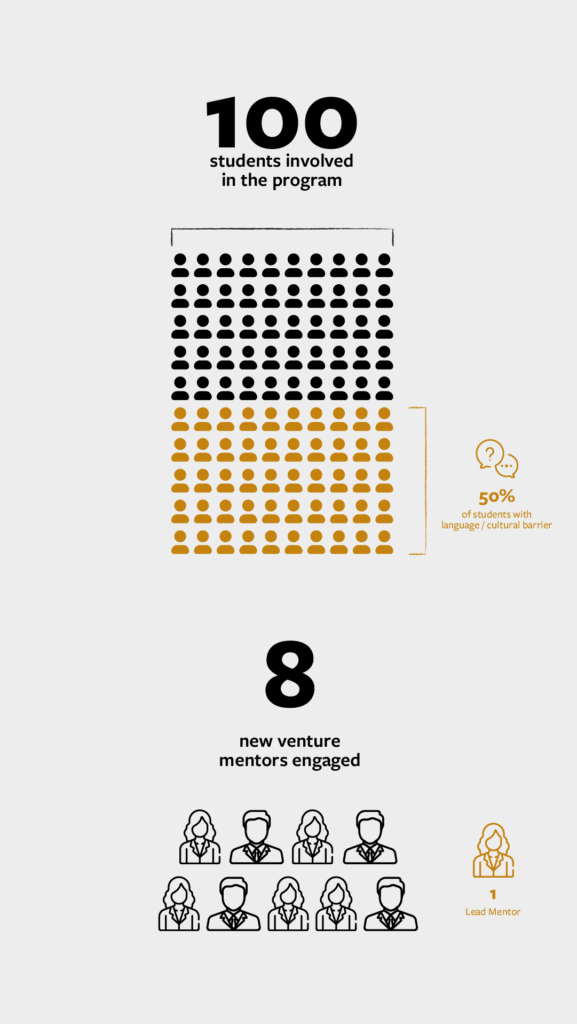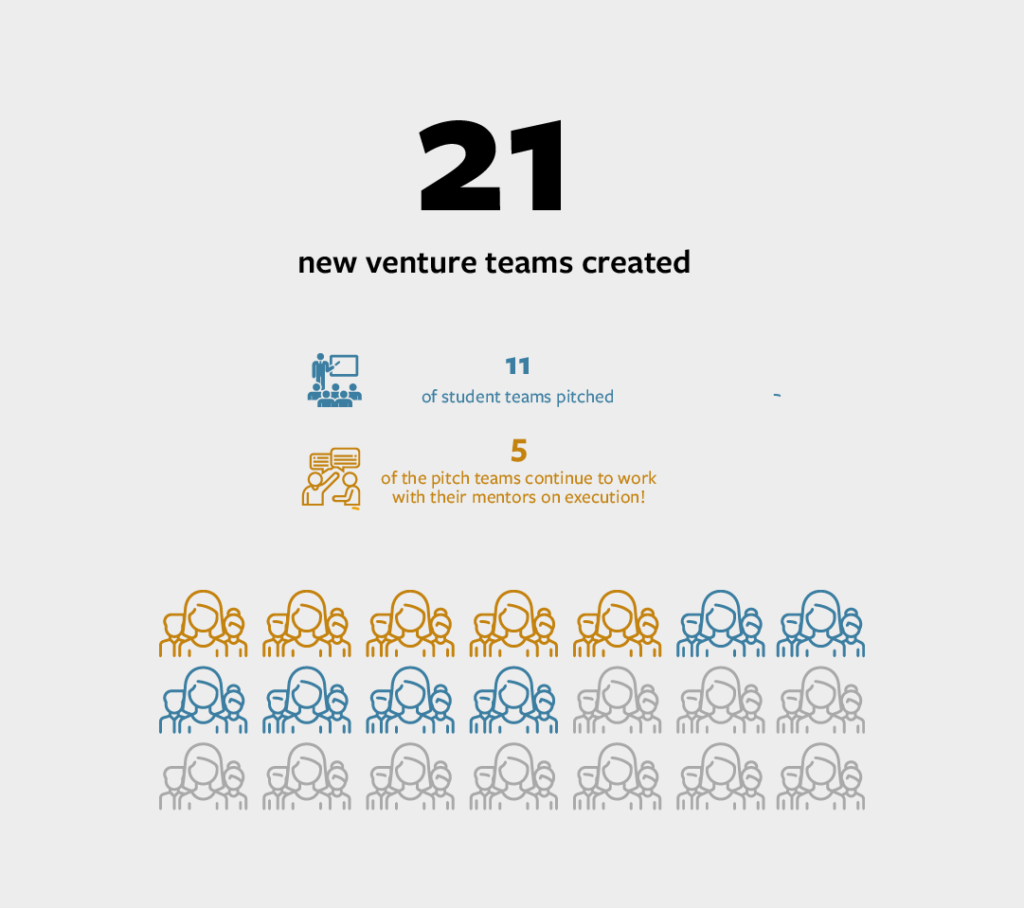SHHHH….Three Secrets to New Venture Mentoring Magic: Insights from Silicon Valley and Beyond
June 23, 2021

What makes a team of Silicon Valley entrepreneurship mentors go from good to great, and even magical?
This past Spring, UC Berkeley assembled its first all virtual mentor team of eight highly dedicated serial entrepreneurs and funders for a custom professional program geared to budding tech entrepreneurs in Singapore. The program is hosted annually by the UC Berkleley Sutardja Center for Entrepreneurship & Technology, where our mission is to empower innovators to positively change the world.
Given the COVID-19 pandemic, we shifted from our traditional in-person 3-day program to weekly online sessions over the course of 2 ½ months, navigating across languages, datelines, physical boundaries and into some unknowns. 100 students, based mainly in Singapore, had the opportunity to learn from a series of interactive lectures, fireside chats and private mentoring sessions. Building on their learnings, they were tasked with further developing and honing a new venture idea, assembling data to test their assumptions, drafting and then pitching to potential investors. What we learned from the students and how we adapted made for mentor magic. In the spirit of Silicon Valley’s mantra of "Paying it Forward," revealed below are the three secrets of what worked well, or didn’t, with real time insights from the mentor team. Feel free to share your thoughts with us, and we would be happy to help you have a similar experience for your students. Please contact me at the UC Berkeley Sutardja Center by email at vhowell@berkeley.edu.
Secret 1 – Find Experienced Mentors with the Heart & the Soul of a Teacher
Secret 2 – Create a System and Tone for Mentor Interaction that Engenders Trust
Secret 3 – Share Pitch Fundamentals but Remember the Objective...Learning
Note: The mentors referenced and quoted throughout helped co-author this article. Please click on their links above, just under the title, to learn more about them.
Secret 1 – Find Experienced Mentors with the Heart & the Soul of a Teacher
Silicon Valley is known for “paying it forward,” and the resources for new venture mentoring are deep and wide. UC Berkeley is ranked #2 globally for entrepreneurship based on Pitchbook’s 10/2020 rankings and our ecosystem is especially strong. As a university, we are able to attract as mentors, entrepreneurs who have started multiple companies, typically with successful exits, who have offered advice and millions in founding capital to hundreds of startups and have diverse global ecosystems of trusted connections. Our “go to” mentors are also incredibly humble and passionate and are either Cal grads or Cal instructors. This was the case for the team of eight mentors, under SCET industry fellow Gigi Wang’s guidance.
Collectively, this team has over 300 years of industry experience, with 30 years per person, on average. Their advanced degrees include PhD, MBA and JD from institutions like UC Berkeley, Stanford, Yale, Rutgers, Princeton, and Columbia. The team has worked at iconic global companies like McKinsey, Apple, Visa, Exxon, and Yahoo! On paper the eight were definitely the “A Team.” This was critical when introducing the mentors to students situated across the Pacific Ocean. There was an immediate awareness that these mentors were special people and the students would need to rise to the occasion in terms of ideas, responsiveness and listening to leverage the opportunity.
This particular team of mentors brought more than just their credentials to the table. They listened to the students and their ideas. They shared their thoughts on the student ideas among themselves and then, in turn, with the student teams. Early in the process, a number of teams were intent on building a start-up focused on the problem of excess and wasted food, more of a social venture – good for them and for us all. As experienced entrepreneurs, the mentors raised the challenge of how to achieve financial success in this area. While they wanted to share this important perspective, they also wanted to keep an open mind and let the students experiment for themselves. Interestingly, they consulted among themselves on how best to support the students. For them, the task was not just about dropping pearls of wisdom, based on their experiences, it was about creating a situation where the students could learn for themselves and perhaps even introduce the mentors to new ways of doing things. Truly, this demonstrates the heart and soul of a teacher. Here are some real-time insights from mentor email exchanges on how to guide teams with a social venture idea:
Mike Grandinetti shares, “I've always taught my social entrepreneurship students that we do not have competitors but allies and comrades in arms. We first want to see the problem SOLVED. If someone can help with that, more power to them. I always urge these types of ventures to explore ways of creating and monetizing value so that they are not solely dependent on donations. In some cases, the Robinhood model, or Tom's Shoes, Warby Parker or even Aravind Eye Care from India, and so many others, makes sense.”
Po Chi Wu writes, “I admire your approach. Putting our expectations and judgments on the next generation of aspiring entrepreneurs does not contribute to their growth or to shaping new and better approaches to solving “intractable problems.” Often the real impediment to progress is our limited creativity and curiosity - we’re not asking the right questions. “
"While I agree that social ventures should welcome and embrace any entities that share their values, there still is competition for financial, human and especially political resources. What entrepreneurs must explore and understand are the dynamics of their ecosystems - and the interactions of social ventures are always complicated and multi-party. Fundamentally, this kind of analysis is essentially the same as for profit-seeking enterprises.”
Kal Deutsch writes, “The value proposition portion of customer discovery and problem/solution pairing exercises is key. If you cannot identify a real and credible value proposition – validated by a segment/persona with a willingness to pay – then you likely have a social impact venture and not a for-profit business.”
Helen Chen offered an introduction to one of her contacts who recently wrote an article on food waste.
With regard to ideation, both Rick Rasmussen and Helen Chen discussed the benefits and drawbacks of sharing this slide – with the intention of advising teams to, if possible, stay away from trying to address these problems:
Secret 2 – Create a System and Tone for Mentor Interaction to Engender Trust
Google surveys and Google docs were at the core of our intra-mentor communications, used to collect and share data. We supplemented with mentor-internal Zoom meetings, email and Slack. The collegial tone of the shared notes, Zoom meetings and subsequent email exchanges set the tone for positive interactions. Had this not happened, we would surely have missed something that should have been obvious – more on that soon.
Early program survey data suggested we would have 21 teams, with a large percentage preferring to interact in Chinese. We assigned each mentor to 3-4 teams with a fit for language (4 of our mentors were proficient in Chinese) and industry expertise. We reserved one mentor, Buddy Burke, to support all teams on the art of the pitch. The mentors were asked to upload learnings onto a shared Google doc with insights gained after 2-3 team interactions. In this way mentors, and the rest of the staff kept abreast of the types and numbers of interactions with each team.

While this method of data sharing is pretty straightforward, lots of planning, guidance and meeting went on in the background. SCET industry fellow Gigi Wang, the mentor team lead, engaged with each mentor individually to describe expectations. She then set the tone with a series of group meetings, reeling everyone in with her encouraging personality. Soon, emails flowed back and forth between a group of eight who had never worked together in the past. Emails reflected light-hearted bantor, some new nicknames and even a healthy sense of competition as mentors engaged with their student teams.
Despite the fact that the mentor team had experience both in the US and globally, we almost missed a key element of cultural difference. Thanks to our open and honest communication among mentors we were able to identify and pivot. This went above and beyond shared documents and to the level of trust established with each other and passion for the students’ learning. In the exchange of messages, the mentors expressed concern that student teams were not understanding objectives, did not seem to be actively engaging in Q&A during the sessions and several even refused to turn on their video cameras during Zoom sessions. All were raising a flag to signal possible student miscommunication and a lack of alignment. At that point, one of the mentors who also teaches extensively in Asia, shared a bit of wisdom we may all have forgotten in our eagerness to reach the program goals. We all took a deep breath and focused on what students get from teachers, with a greater appreciation of differences in learning and interaction. Here are some real-time insights from mentor email exchanges on how to manage alignment challenges with the students:
Po Chi Wu reminded all mentors that from his experience teaching in Hong Kong and Greater China, “Most Chinese students can read and understand non-technical English, but have had little practice speaking in English, so are naturally shy and unsure of themselves. By the way, Chinese students generally are not trained to ask questions of instructors (culturally discouraged) and rely on discussions among themselves and their friends/classmates to clarify their understanding. Just encouraging them to develop critical thinking skills and to have the courage to show their vulnerability by asking questions is a big contribution we mentors/advisors as well as instructors can make.”
Further he writes, “My philosophy as a university professor which I announced at the beginning of the semester, is that entrepreneurship is not an academic subject, and student performance in the course, i.e. the grade, is measured by what they learn. If students enroll because they want to learn, they should feel accountable for what they learn. It’s their responsibility to show me what they learn. I don’t grade on anything they can recite from class discussions/lectures or what they memorize from what they read. I tell them that each student’s learning is unique, the structured program notwithstanding. To me, this process more closely mirrors the actual experience of the entrepreneurial journey. By the way, I have always found that entrepreneurs are the most curious and passionate learners! They are far more eager than those students who are consistently at the top of their academic classes. A different mindset (growth versus perfectionist) is at work.”
Secret 3 - Share Pitch Fundamentals but Remember the Objective...Learning
New venture guidance abounds with video examples, key steps or stages, blogs and even templates. This program relied on these sources as well, with one key twist. Mentor lead, Gigi Wang was able to share best practices from SRI (the infamous SRI – Stanford Research Institute – home of ideas like Siri). She introduced the concept of communicating new ideas organized by NABC – Need, Approach, Benefit and Competition, as well as providing a thorough presentation on her framework for starting a company – Venture Fundamentals. In addition, mentors like Shuonan Chen recommended viewing pitch videos from Cal grad Tony Xu of DoorDash – (e.g. DoorDash). Kal Deutsch supplemented with his own pitch template and his tried and true framework shown below:
VENTURE FUNDAMENTALS
- Problem - What is the BIG Need/Opportunity? Who has that problem?
- Market Size - How big is the market?
- Solution - How do you solve that problem and why is your offering uniquely better? What are the benefits for the customers?
- Competitors - Who are the competitors and why are you better?
- Business Model - How do you make money? Is it recurring? How often?
- Go-to-Market - How are you entering the market and getting your product adopted by the customers?
- Traction - What is the traction which validates your venture?
- Team - Who is on your team? How will they help you succeed?
- Financials - What are the financial projections Revenues & Expenses?
- Ask - What do you want from your audience?
Buddy Burke, known for his coaching at Apple and an integral part of all of our bootcamps at the Sutardja Center, helped students with speaking tips. He preaches the three Ps: Pitch, Pace and Pause. Moreover, his work with each team helped hone decks, resolve speaking nervousness and empowered them with great presentation skills.
Despite all the guidance, under the surface was a fundamental disconnect within the teams. Each mentor added, both in the spreadsheet and subsequent emails, that their teams were nervous, despite the coaching and practice. Mentors shared that the cultural norms in The Valley were not always applicable to the students. This led to a large pivot – the decision to make the end of program pitches voluntary instead of mandatory. So, how did it turn out? The program was a success for the participants and a key learning opportunity for our team of mentors. Results below:

Here are some real-time insights from mentor email exchanges on how to help both students and mentors get the most out of the experience and keep a growth mindset:
Po Chi Wu writes, "Our Berkeley/Silicon Valley perspective on entrepreneurship carries many assumptions we take for granted and never think about. Pitches to potential investors are a very local challenge that must be adapted to local culture and habits. Even the logic of the sequence of information that we present can be different to people in different cultures, especially in Asia. While my Chinese teams are eager to learn how entrepreneurs build startups in the US, they are not yet thinking about presenting to US investors. They need to understand our point of view and adapt what they can use in their local context. Of course, the fundamental principles of business priorities, story-telling, and presentation skills are universal and common to all cultures, but the way languages and cultures have evolved has a profound impact on how the brain processes information."
Shuonan Chen responds, "So, giving the option to do a presentation on lessons learned could be great for encouraging the team to actually explore new problem areas instead of using a well-polished presentation that's not truly the work of the current team.”
Mike Grandinetti adds, “In my book, this represents real learning. I realize it's not the standard, but the team would likely feel like they have not 'failed.'"
Gigi Wang stresses that, “Students are learning and developing their growth mindset. We aren’t trying to make this a competitive exercise. The judges … are going to be focused on giving constructive reinforcing feedback.”
Learn more about our programs:
- Berkeley Method of Entrepreneurship Bootcamp - We welcome you to come to Berkeley for this 5 day intensive new venture experience.
- SCET Professional Programs - Learn more about our professional and custom programming in entrepreneurship and innovation.
